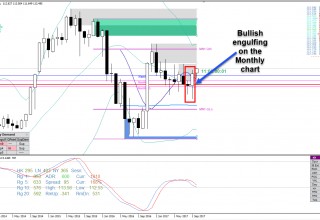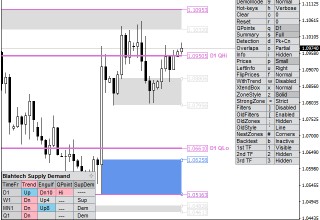Yen Carry Trade: Will We See a Comeback?

LONDON, October 23, 2017 (Newswire.com) - USDJPY has been moving higher in the last few weeks. With the current Federal Reserve plans for gradual rate hikes, we could see this major pair back at $120 over the next quarter. Coupled with the negative interest rates in Japan, this move could signal the comeback of the yen carry trade. Technical analyst and trader Deeyana Angelo from Blahtech explains that the carry trades typically need stable currencies to work out. In the recent years, forex markets have been notoriously unstable due to uncertainty and worries over a systemic breakdown of the Western world as we know it. However, with the Fed slowly raising their rates, Bank of England is expected to follow suit very soon.
This could mean that the yen-based carry trades might be making a grand comeback. Over the last year or so, the carry trades have been unreliable due to worldwide low-interest rates. Although Japan has gone down the route of the experimental negative interest rates, the Fed kept their own rates low after the tapering of the aggressive Quantitative Easing program. But now, the US economy is gaining stable ground, so the impending rate hikes should cause a knock-on effect throughout the rest of the Western monetary policies.
Over the last year or so, the carry trades have been unreliable due to worldwide low-interest rates. Although Japan has gone down the route of the experimental negative interest rates, the Fed kept their own rates low after the tapering of the aggressive Quantitative Easing program. But now, the US economy is gaining stable ground, so the impending rate hikes should cause a knock-on effect throughout the rest of the Western monetary policies.
Deeyana Angelo, Mrs
Looking at a purely technical picture, the USDJPY monthly chart ended with a bullish engulfing candle and is rapidly looking to test the 2017 highs. Should this happen, the next area that would represent a good selling opportunity would only come at $120 mark. For the time being, the positive carry trade seems to have taken hold.
Deeyana Angelo, who also acts as a managing director of a boutique London-based fintech company Blahtech and its educational trading outfit Market Stalkers, is fairly confident that the flat curve we're seeing in hedge funds is not the new norm, but rather an anomaly due to the unfavourable interest rates and overall nervousness of the investors:
- "Turning to gold and energy markets has always been my trick to surviving the turbulent times. As a trader, I survived the Eurozone crisis and the complete liquidity dry-up after the US government shutdown back in 2013 by turning to Crude Oil and Gold as my main choices for running short-term trades. Although forex is hailed as the most liquid asset class, there has been a lot of ranged moves with vastly decreased daily ranges, which makes it tough to hold onto swing-type trades - there isn't enough momentum to push the trade into safe waters. Many less experienced traders get caught up in the intraday moves, mainly through lack of knowledge, but also due to relatively small daily ranges that make it quite difficult to get a higher risk/reward ratio necessary for a successful trading system."
Source: Blahtech



